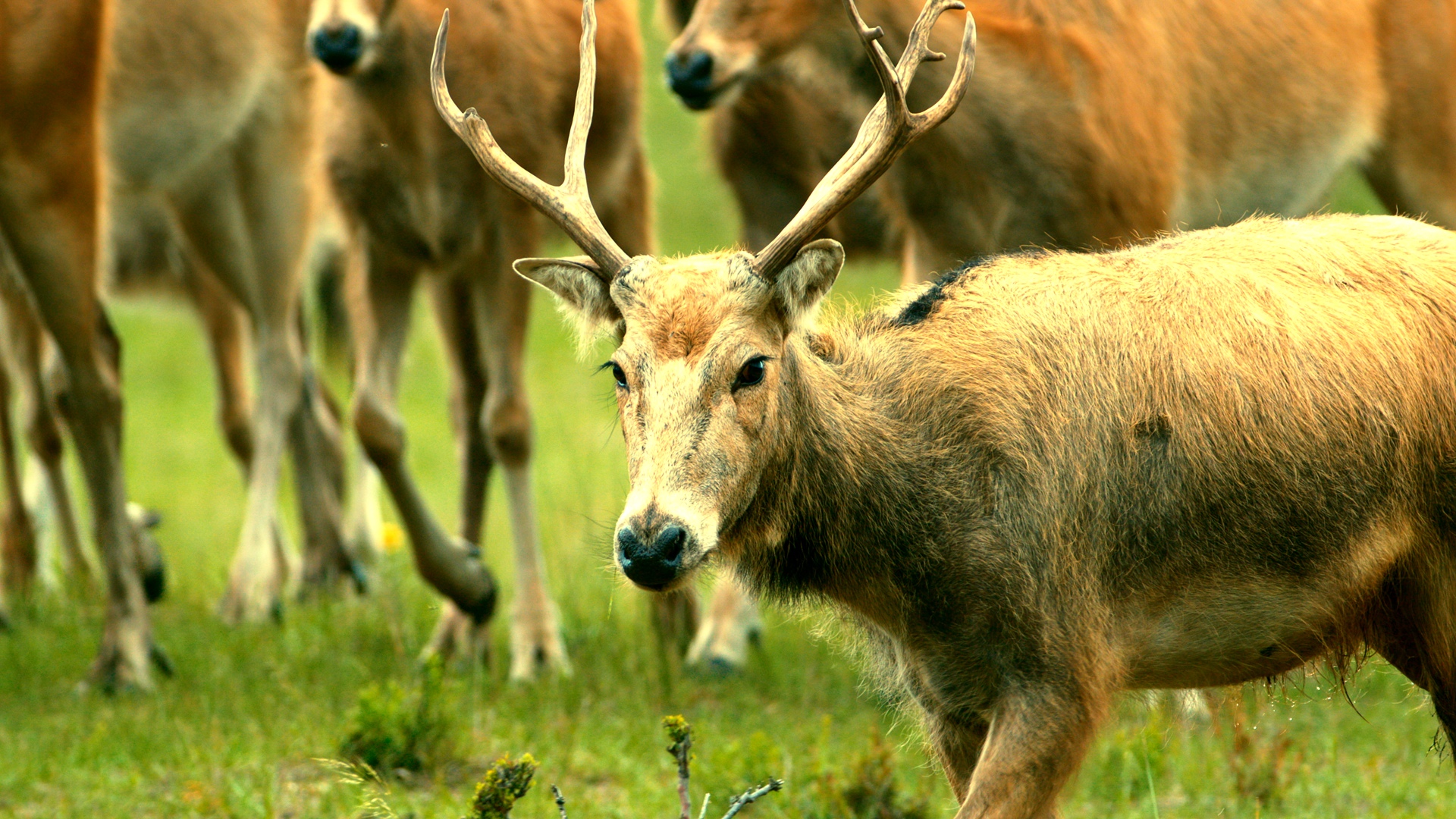05:26

The milu deer native to China had mainly lived in wetland plains until extinction in their ancestral habitat. Since their reintroduction from Britain in 1985, their population in the wild has grown robustly.
The Hebei Upper Reaches of the Luanhe River National Nature Reserve is the deer's northernmost habitat in north China. The 50,600-hectare woodland was carved from the Mulan Paddock State-owned Forest Farm in 2008. Part of the enclosed zones serves as the reintegration base. The herd of molting deer has come to enjoy the verdant spring. Watch this episode for more.
About 'Journeys in Nature': Hebei Weichang Series
"Saihanba" means "beautiful highland" in the Mongolian language. With an average altitude of 1,500 meters, it is located at the intersection of the North China Plain and the Mongolian Plateau. After six decades of unremitting efforts by the locals, the sandy land has turned into a "Great Green Wall," setting a telling example of promoting the construction of ecological civilization. Our 10-episode series delves into the stories behind the miracle of Saihanba and explores the unique biodiversity that this giant artificial forest sustains.
For more:
Hebei Weichang Series | Episode 1: Home at Saihanba
Hebei Weichang Series | Episode 2: Green in the sand
Hebei Weichang Series | Episode 3: Undulating pines
Hebei Weichang Series | Episode 4: Aboriginal lives
Hebei Weichang Series | Episode 5: Qixinghu Wetland
Hebei Weichang Series | Episode 6: Perseverance
Hebei Weichang Series | Episode 7: The legacy
(Cover image via VCG and video screenshot)
(If you want to contribute and have specific expertise, please contact us at nature@cgtn.com.)